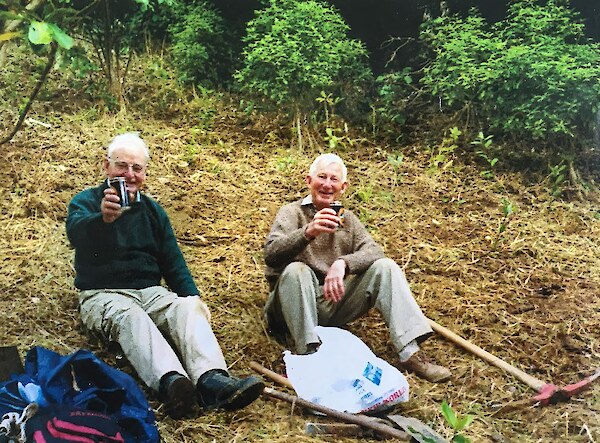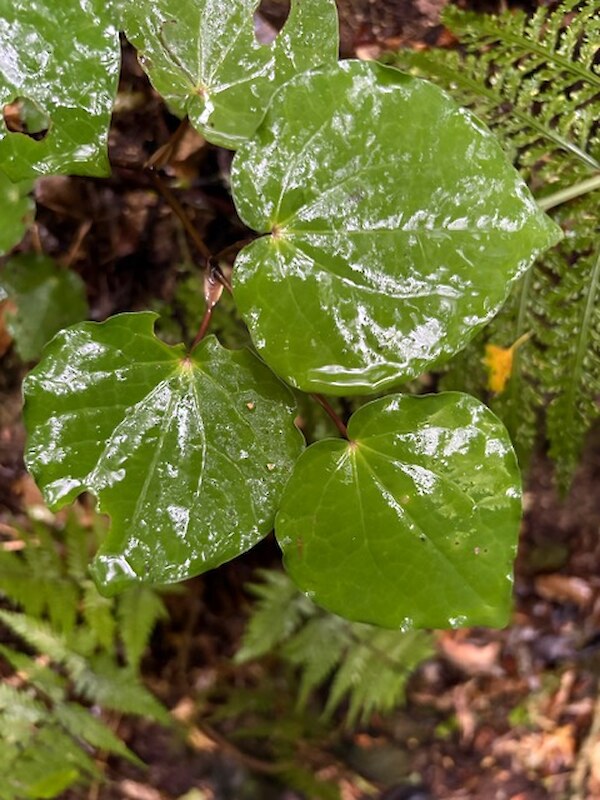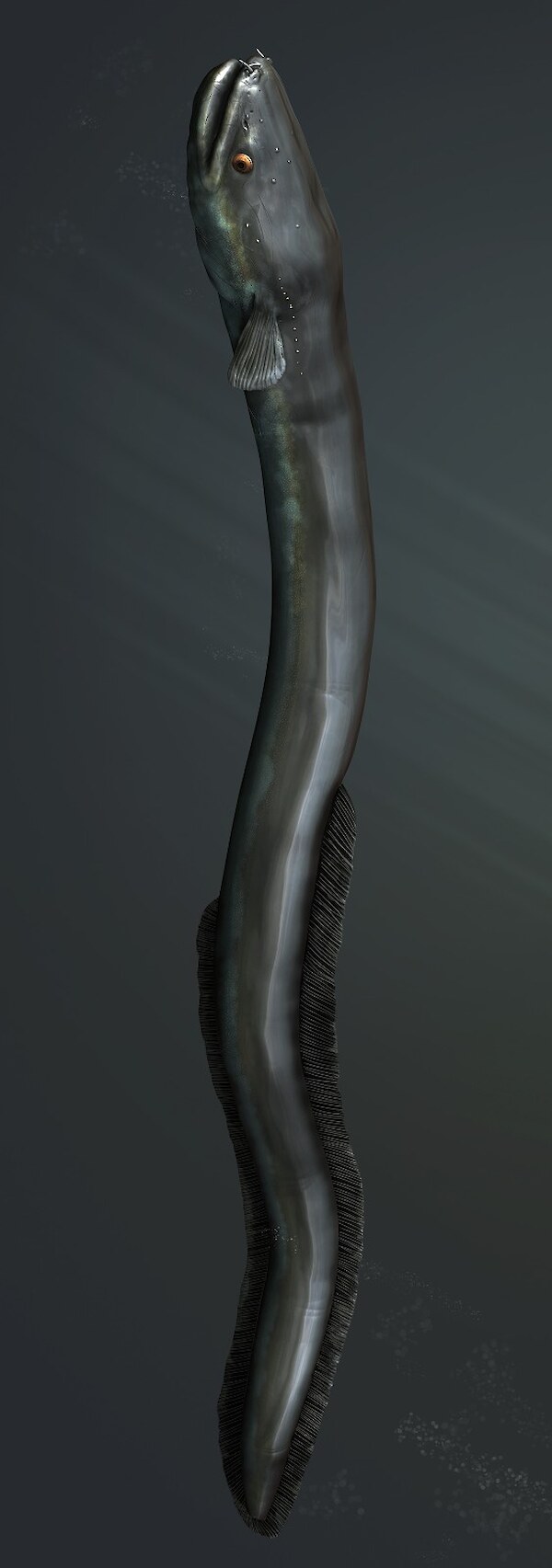The Photo
Lightly, between forefinger and thumb, I hold up a photo and study it closely. It’s from one of the first pages of my Otari album. It shows two older men sitting on a bank. They are smiling and squinting into the sun, each with grubby-fingered fists raising a tin of beer in cheer.
 One sports glasses and a bottle-green jersey; his thin white hair is lifting slightly in the air. The other has an impressively lush mop of brilliant white hair, combed tidily to one side. Both would be in their mid 70s; both have mud stains on their trousers’ knees and grubbers at their side. With their impish grins, they could be the Statler and Waldorf Muppet characters that heckle from their balcony seats in the theatre. But they’re not.
One sports glasses and a bottle-green jersey; his thin white hair is lifting slightly in the air. The other has an impressively lush mop of brilliant white hair, combed tidily to one side. Both would be in their mid 70s; both have mud stains on their trousers’ knees and grubbers at their side. With their impish grins, they could be the Statler and Waldorf Muppet characters that heckle from their balcony seats in the theatre. But they’re not.
It’s Jock Flemming to the left, Athol Swann to the right; two doyen of the Ōtari-Wilton’s Bush Trust. Along with John Dawson, Margaret Crimp and Margaret Chetwin, they form the cabal I most associate with the gentle persistence that resulted in the formation of the trust.
The photo was taken in 2004. We’d just finished a Saturday morning of planting beside Kaiwharawhara Stream. This was a drink of satisfaction at the end of a morning’s digging. Twenty years on, the area is now a thick scraggle of young trees. It would be hard to find the cleared bank they sat on; even harder to understand that twenty years ago, this bushy section along the Kaiwharawhara Stream in Ōtari-Wilton’s Bush had been a hopeless mess of blackberry.
I raise my own glass to these two gentle men whose vision and support has seen the rewilding of the Kaiwharawhara valley.
Bronwen Wall, Ngaio



